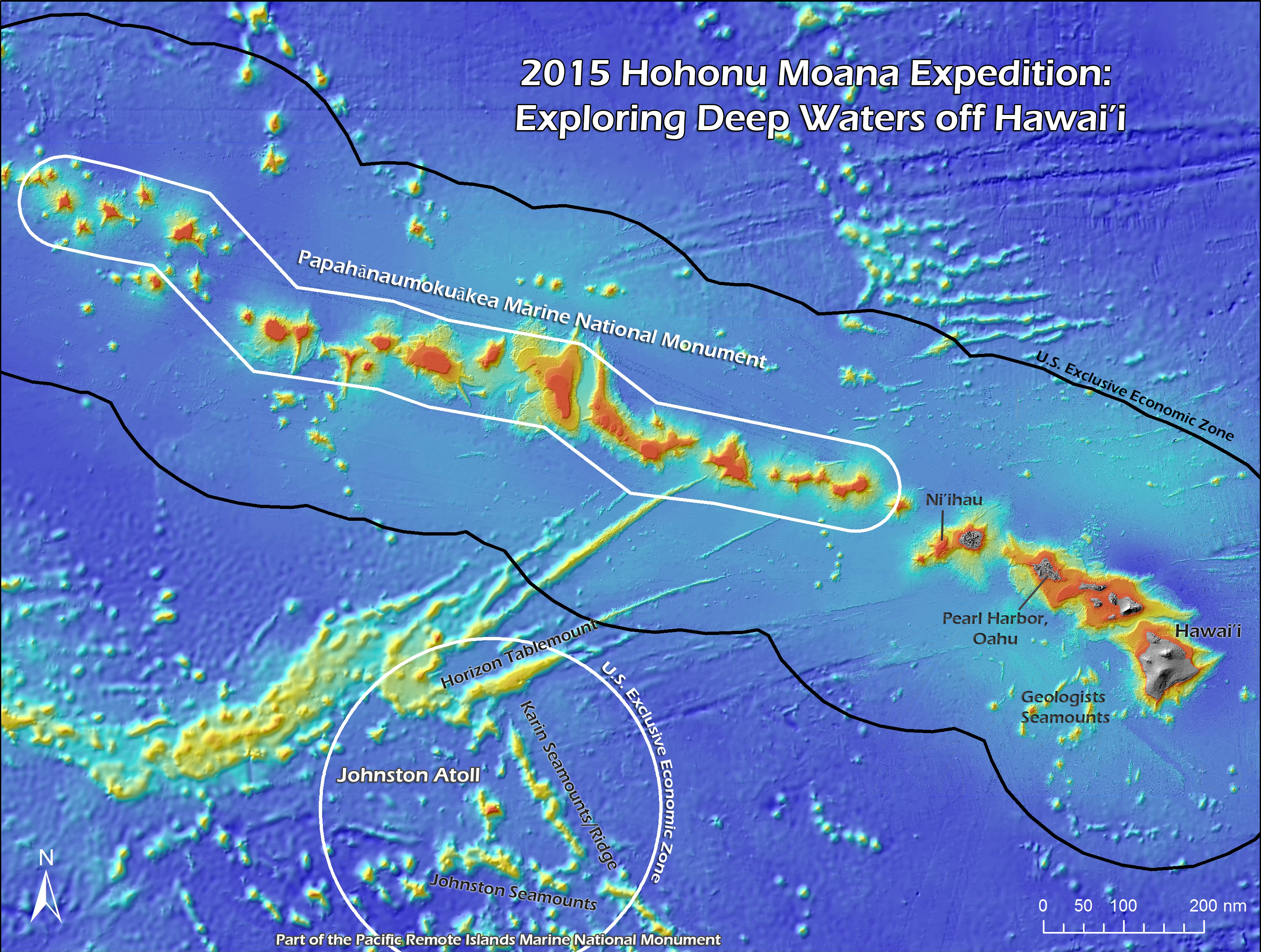Public invited to join NOAA on expedition of Pacific marine protected areas
 This map shows the areas NOAA Ship Okeanos Explorer will be visiting during its 2015 expedition to marine protected areas in the Pacific. Image courtesy of NOAA; right click on it to view the full-sized map.
This map shows the areas NOAA Ship Okeanos Explorer will be visiting during its 2015 expedition to marine protected areas in the Pacific. Image courtesy of NOAA; right click on it to view the full-sized map. Update: Room 131 in the Hawai‘i Institute of Geophysics (HIG) Building on the UH Mānoa campus is an Exploration Command Center — a location where live video feeds from the ship and ROVs are displayed and scientists on land can communicate with the ship-board team, enabling tele-presence collaboration.
NOAA Ship Okeanos Explorer will begin two months of dives using unmanned remotely operated vehicles, or ROVs, to explore marine protected areas in the central Pacific Ocean. Starting on 01 August 2015, anyone with an internet connection can virtually explore the deep sea with scientists and researchers from their computer or mobile device.
The ship and its crew will investigate deeper waters in and around Papahānaumokuākea Marine National Monument in the Northwestern Hawaiian Islands, Johnston Atoll in the Pacific Remote Islands Marine National Monument, and the Hawaiian Islands Humpback Whale National Marine Sanctuary.
“Given the unexplored nature of these areas, their remoteness and their known status as biodiversity hotspots, I’d be very surprised if we didn’t see many animals and phenomena that are new to science,” said expedition science team lead Christopher Kelley, associate professor of biology and program biologist at the Hawaii Undersea Research Laboratory (HURL).
Read more about it in the NOAA press release.



